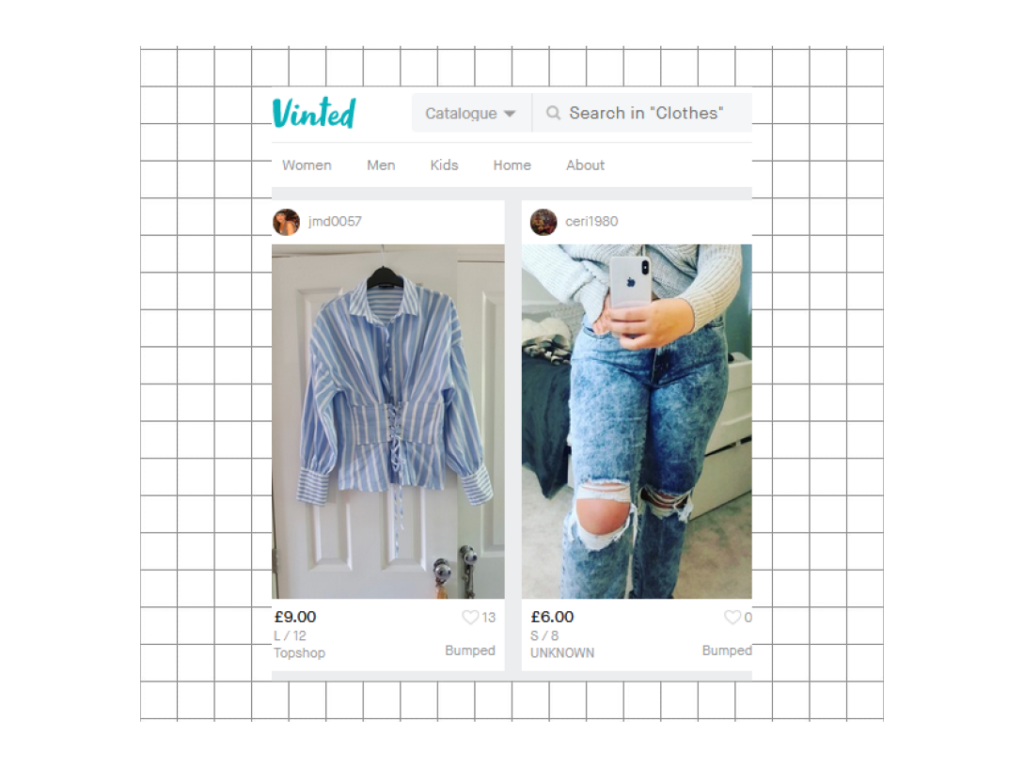Among many other things, the pandemic has given us time to take a long hard look at our wardrobes, and finally do that long overdue clear out. Why not earn some extra cash by selling your castoff clothes?
You probably already know about the lovechild of Instagram and eBay, Depop. But Depop has come under fire recently for it’s high prices, fees and general gentrification. So what about the others? We’ve rounded up the best apps and websites to get you started.
Vinted
Think of less-established Vinted as the mum of Depop, because of its slightly older age range of users. Founded in 2008, the app works very similarly to Depop, except there’s no fees to sell and only buyers are charged.
There is also the option to do an “Item Bump,” where sellers can pay 95p to have their item shown to more members. Unlike Depop, you can use Vinted on your laptop as well as your phone.
Pros: No fees
Cons: Less users

eBay
eBay has been around much longer than newbies Depop and Vinted, and it’s still a great way to shift your excess wardrobe in return for cash. Two secondhand fashion items were sold every three seconds between January and July last year on eBay.
Like Depop, eBay takes 10% of all final sales. You get to list your first 1,000 items each month for free, after which you’re charged 35p per listing.
You can either set a fixed price so people can “Buy It Now” or leave the item up for auction so buyers can place bids. Auction might get more than you hoped, and you can set a minimum price so you’ll have a guarantee of the least you’ll get.
Pros: Bidding means you might get more money
Cons: Might have to pay fees even if you don’t sell anything
Facebook Marketplace
Facebook is best for selling bundles of clothes. The marketplace has been merged with Facebook selling groups, which are usually location-specific, meaning you might be able to save on postage costs if you’re buying and selling nearby.
Pros: Can save on postage by selling locally
Cons: No buyer protection
Start selling on Facebook marketplace
ASOS marketplace
Not one for those looking to make a few pounds off their old clothes, this is for those wanting to get their small business off the ground, or people looking to set one up.
You must submit an application for a boutique, and you’ll need to make the clothes yourself, already have an independent fashion brand or have a decent selection of good-quality vintage garments to be in with a chance. At least 15 items must be consistently in your boutique. Seller fees are £20 a month, plus 20% commission on any sales.
Pros: Huge global audience potential
Cons: You need to have a business
Start selling on ASOS marketplace

Preloved
Similar to Gumtree, Preloved has a focus on local selling, so again you might be able to save on postage costs. It’s one of the biggest classified UK ads sites with millions of users. Even better, there are no fees.
Like Facebook marketplace, there’s a big focus on location, so you might be able to cut out postage costs if someone can pick up the items.
Pros: Completely free
Cons: Only three pictures per ad
Etsy
Usually known for handmade crafts, Etsy might be a great home for your items if you make or upcycle clothing. Embroidered pieces, jewellery and vintage clothing are perfect for selling here. Make sure you read the rules on what you can and can’t sell. There’s also a $0.20 listing fee, 5% transaction fee and a 4% + £0.20 payment processing fee. Apart from the listing fee, you only pay fees when you make a sale.
Pros: Collaborative seller community
Cons: Lots of competitive and fees
Tips for selling clothes online
Nail the photos
Always upload the maximum number of photos for each listing. Make sure they are good quality, with decent lighting. Your best bet is outside with someone wearing the clothes. If the item doesn’t fit you, see if you can find a photo of a model wearing it online, or ask a friend to try it on.
Be realistic
If you bought something for £30 ten years ago, you’re not going to be able to sell it for that now. On Depop, Vinted and Facebook marketplace, it’s OK to have your prices a little higher because potential buyers can easily message you with an offer.
Be price savvy
Copy the shops and list your things for £9.99 instead of £10. And make sure you have the correct postage cost. There’s nothing worse than realising you charged someone £3 for postage when it will actually cost you double that.
Build up a good reputation
Be honest about the condition of the clothes, how quickly you can post things, and always respond to messages politely.
Keep proof of postage
For both your and the buyer’s peace of mind, it’s always worth keeping proof of postage until you know your buyer has received their item.
If you’ve got old clothes that aren’t suitable for selling, why not try upcycling them instead? We tried revamping a top with no sewing here!

